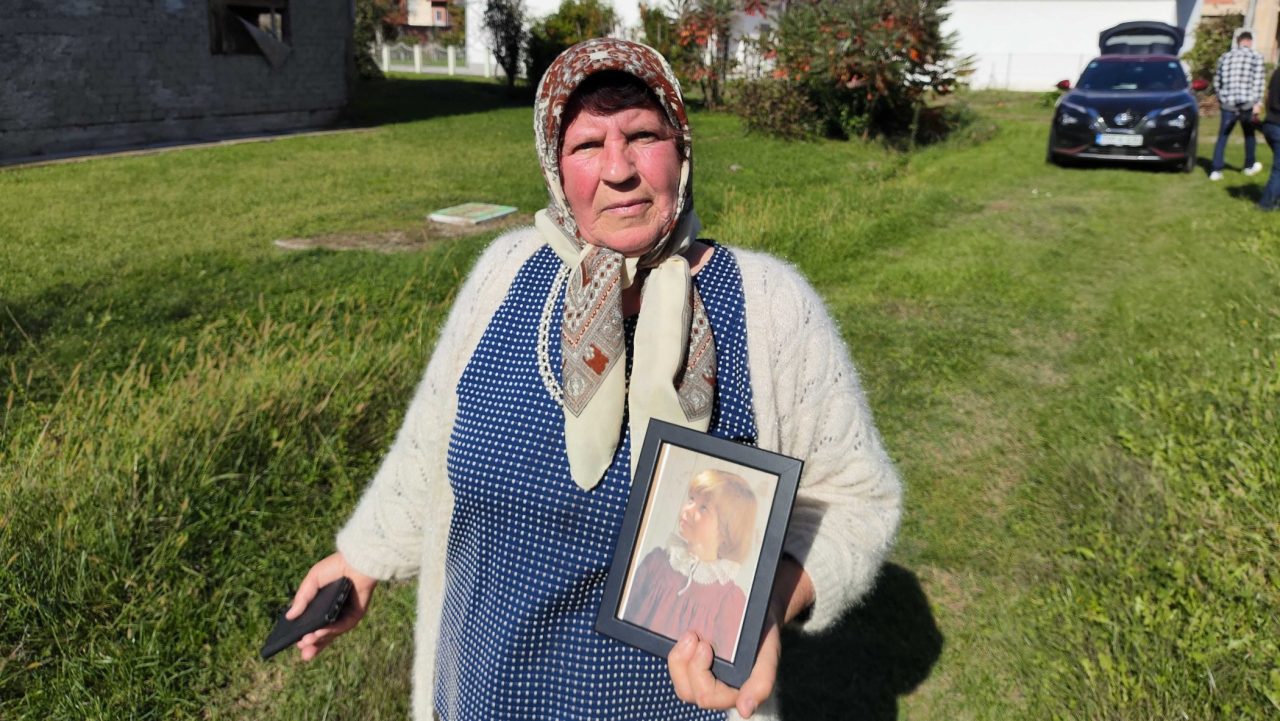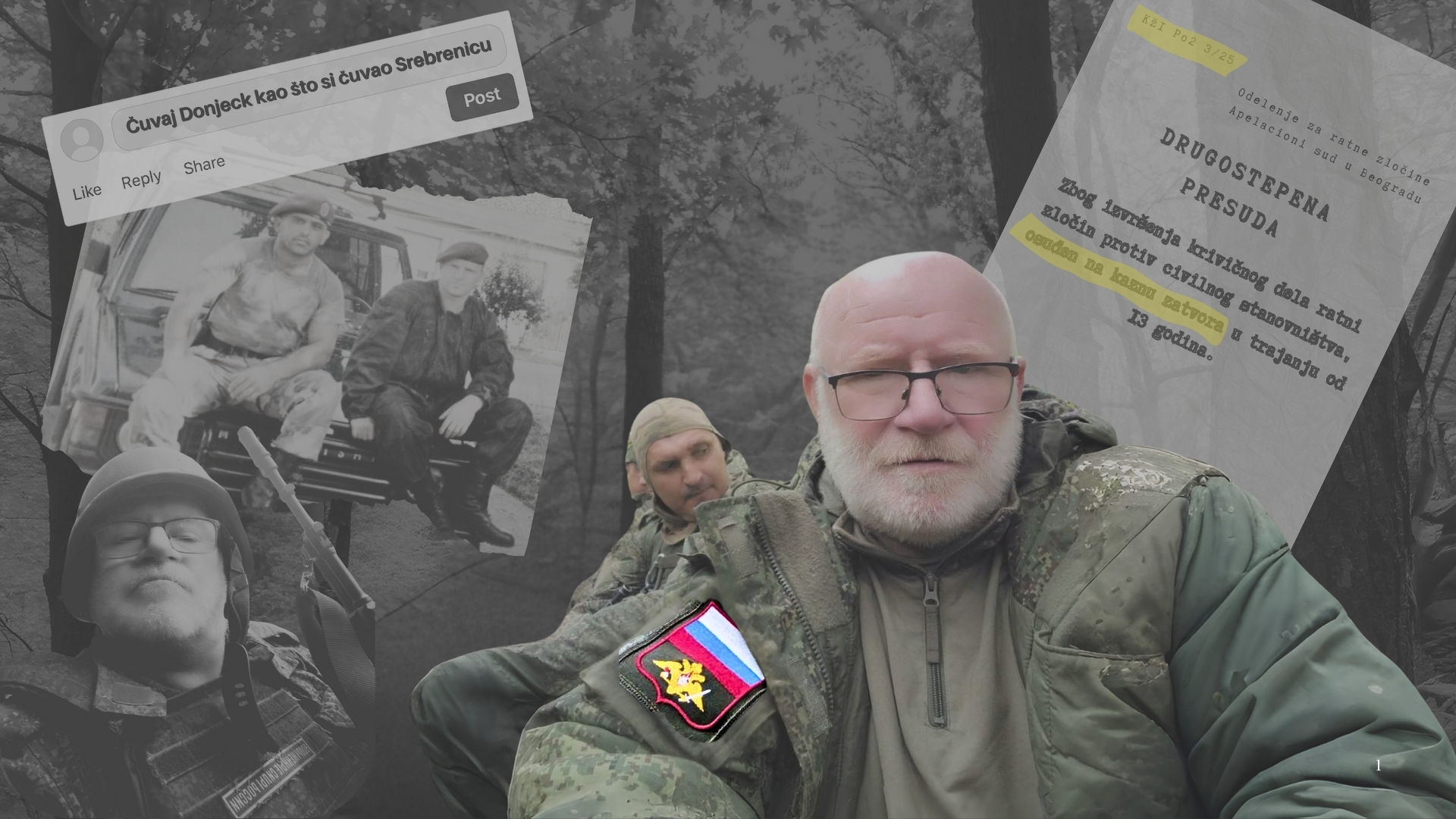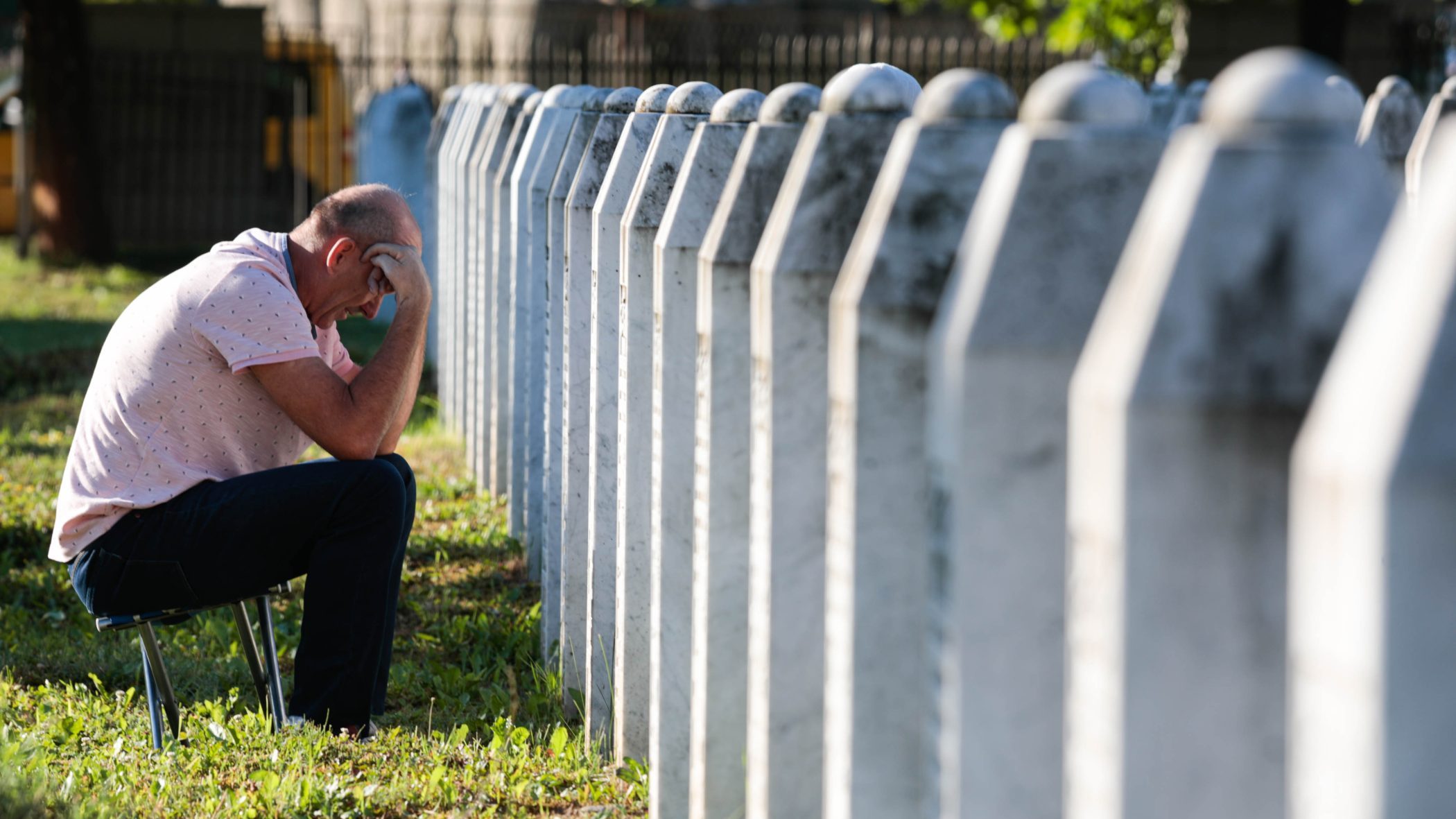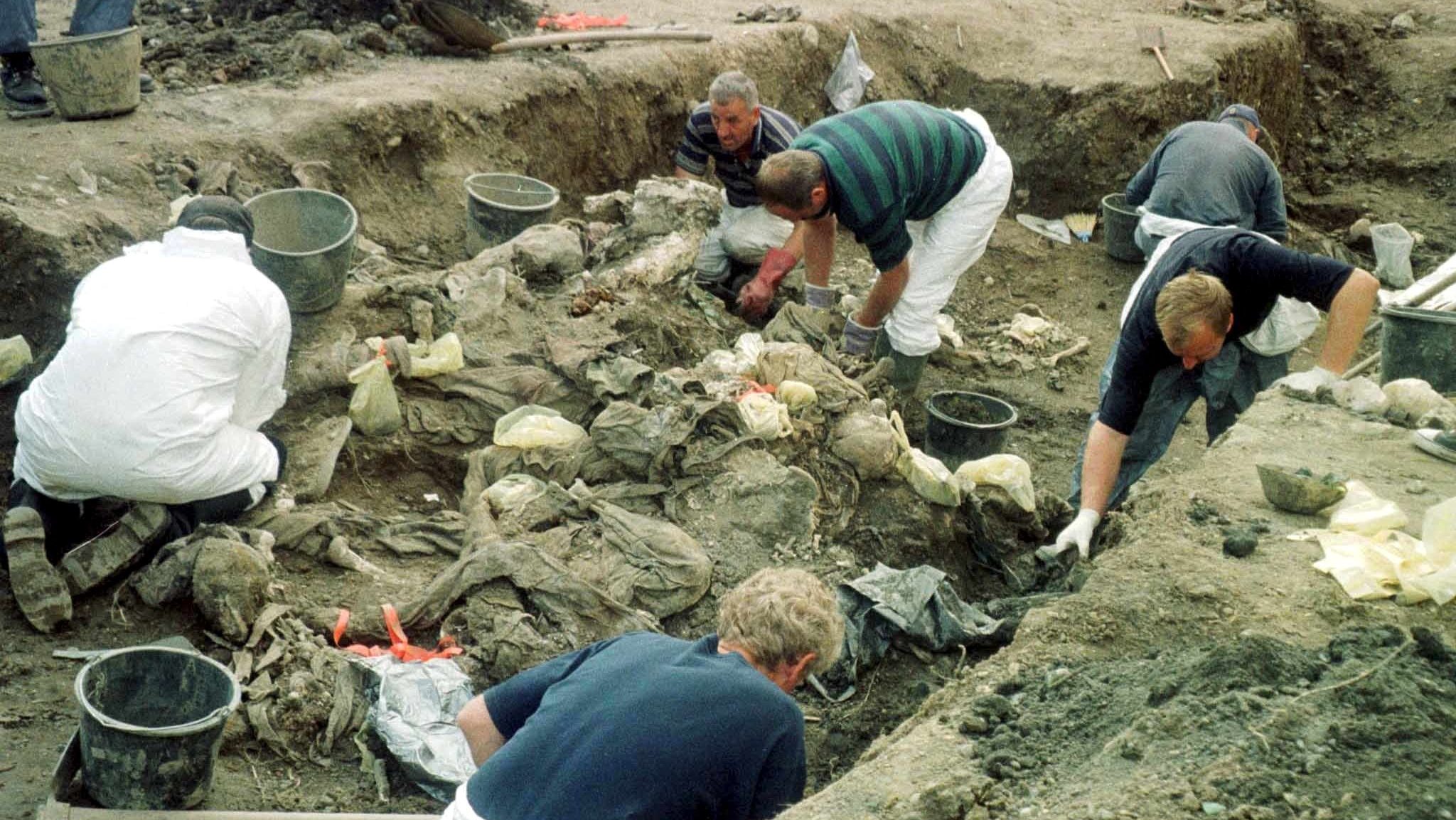This post is also available in: Bosnian
Admir Hurtić was 13 and in the seventh grade of primary school when he disappeared in the spring of 1992 in Grapska, a village near the city of Doboj. His cousin Amir remembers him as a clever, dark-haired boy who enjoyed reading novels and doing football practice at the local club.
“His father Ibrahim was a primary school teacher. They had their own library at home. Admir had read most of those books. A few days before the attack on Grapska, he asked one of our teachers if we would survive and what would happen to us,” said Amir, who was also Admir’s schoolmate.
Amir told Detektor that Admir loved the Italian comic books Zagor and Il Grande Blek, which he would swap with his friends Elvis Muratović and Alem Hasančević. None of the three youths are alive today, Amir said.
Amir was expelled from Grapska on 11 May 1992 when the village was attacked by Yugoslav People’s Army, JNA troops and Serb paramilitaries. Some locals remained in the village, however: as Amir recalls, his cousin stayed behind with his parents and a group of other civilians.
“The group mostly rounded up the cattle and collected up the dead bodies, or home appliances on the orders of the Yugoslav People’s Army and paramilitaries ,” said Amir.
“To our knowledge, when they were no longer needed, they were killed and set on fire. We are still searching for another 31 who were killed or disappeared in Grapska,” he added.
According to Bosnia and Herzegovina’s Missing Persons Institute, another minor, Sanel Džebić, who was 17, also disappeared in the aftermath of the attack on Grapska.
Sanel Džebić’s mother Zinajeta said Bosnian Serb Army soldiers came to Bukovačke Čivčije near Doboj at Eid and asked all the locals to surrender their weapons, threatening to kill all the men.
“They refused to give themselves up. They gathered and went off to Grapska. I have never seen since,” Zinajeta Džebić told Detektor.
Sanel was a first-year student at a mechanical engineering school in Doboj, tall and dark.
“I was sitting outdoors with my mother and watched the shelling of Grapska started,” said his mother, who was expelled from Doboj with her other two children, a few months afterwards.
“He’s on my mind every day, I’m looking for something, waiting to find him. The hardest part is not knowing anything. If only I could find something; find him and at least bury him while I’m alive. That I could bear with God’s grace,” she added.
The shelling of Grapska
 Esma Hurtić u rukama drži fotografiju ubijene kćerke Amele. Foto: Detektor
Esma Hurtić u rukama drži fotografiju ubijene kćerke Amele. Foto: Detektor
Almir Grabovica of the Institute for the Research of Crimes Against Humanity and International Law is currently writing a book about the crimes in Grapska, based on statements made by survivors after the war and facts he has gathered in the meantime.
Grabovica learned that the Yugoslav People’s Army took over Radio Doboj in early May 1992, and used it to spread propaganda claiming that alleged members of a Bosniak force called the Green Berets were in Grapska.
Grabovica said that, using radio broadcasts and megaphones, JNA troops demanded the locals to hand over their weapons by May 10. After their failure to do so, the shelling of the village commenced.
“The first shell fell at 11:23, followed by a fierce artillery attack that lasted until seven in the evening, killing 34 civilians. Then an infantry attack followed. There were two tanks, there was no defence of Grapska. The infantry entered immediately,” Grabovica said, adding that the survivors were ordered to head towards Kostajnica.
Esma Hurtić said that she will remember this day for the rest of her life, as she talks through tears about the shelling of Grapska, when her 15-year-old daughter Amela, a first-year student at the medical school in Doboj, was killed.
“A shell fell, seven were left dead and seven wounded. My Amela was killed on the spot, I was wounded in the leg and arm. One girl lost her legs. I picked her up, I thought she was my Amela, and I fell on them as I fainted,” said Esma, holding on to her daughter’s photograph and pointing to the place where she was killed.
Her husband and 16-year-old son were taken to Kostajnica and held in a detention camp, while she was transferred to a hospital in Doboj.
“They surrendered and the troops told them they wouldn’t harm them. I didn’t see them for two months, I was out of my mind, scared. Both of them were severely beaten in the camps, and my husband died 12 years ago as a result of the beating,” she said.
Nikola Jorgić, who went by the nickname Jorga, was sentenced to life imprisonment in Germany for the murder of 22 civilians in Grapska.
In the judgment in the case against Jovica Stanišić, who was head of the Serbian State Security Service (SDB), and Franko Simatović, who was an SDB official, the trial chamber at the court in The Hague found that Serbian forces – paramilitaries, the JNA, forces under the command of Milovan Stanković, Serbian police, as well as forces under the command of Radojica Božović, including fighters trained on Mount Ozren, attacked and took control of the town of Doboj on 3 May 1992.
According to the judgement, they advanced further to take control of other non-Serb villages – including Grapska Gornja, Čivčije Bukovičke, Dragalovci, Johovac and Kotorsko.
During the attack and after taking control, they destroyed mosques and at least one Catholic church, looted and stole the property of non-Serb residents, forcibly expelled, arbitrarily arrested and detained, abused and killed non-Serb civilians, some of them in various detention centres, made them do forced labour and killed them, and also used them as human shields.
Sniper hit takes down youngest victim
A monument in Grapska bears the names of 106 victims killed during the war. More than 60 per cent of those killed here on May 10 1992 were civilians, says Aljo Hasančević, a former detainee from Grapska.
“Denis Delić was the youngest victim, killed at the age of 11. He arrived with his mother at his grandfather’s from the neighbouring settlement of Bukovačke Čivčije, which was already occupied, and was hit by a sniper near the house,” said Hasančević. He explained that the boy’s remains were exhumed from a mass grave and buried in Grapska.
Hasančević, much like many locals, played for the local football club, Omladinac. Taking the Detektor team to the café named after the club, he shows of the walls decorated with photographs of former players and coaches. During the war, 16 players from the club were killed.
“Last year, we celebrated the 50th anniversary of the club’s founding. Unfortunately, we awarded over 40 posthumous certificates of appreciation. They’re all former football players, from juniors to the first team, or members of the management,” Hasančević said.
Many Grapska residents, like Hasančević, were taken to detention camps across Bosnia and Herzegovina.
“I spent almost 14 months in the camps. First I was in Bosanski Šamac, from where I was transferred to the Pelagićevo Military Prison near Gradačac, and finally I was exchanged from the Batković camp on 21 July 1993. I was severely beaten. On 7 May 1992, I witnessed a horrendous crime, when 16 people were killed in the town of Crkvina,” Hasančević recalled.
As regards court verdicts for the wartime crimes in the area, the Court of Bosnia and Herzegovina, in a first-instance verdict, acquitted Borislav Paravac, Andrija Bjelošević and Milan Savić of committing crimes against humanity in the Doboj and Teslić areas.
The verdict cleared Paravac, Bjelošević and Savić of charges of murder, unlawful imprisonment, the forcible transfer of the Bosniak and Croat population, attacks on civilians and settlements, forced disappearances, physical abuse, torture, looting and destruction of places of worship.
“It is clear that horrendous crimes were committed in the Doboj and Teslić municipalities, however, the chamber could not find causality between these crimes and the actions of the defendants… It does not suffice to merely describe the crime,” said judge Minka Kreho while explaining the first-instance verdict.
According to the Missing Persons Institute of Bosnia and Herzegovina, 136 people from the Doboj municipality are still unaccounted for. A total of 357 people went missing during the war in the area, and the remains of 221 of the victims have been exhumed and identified so far.
*This analysis was produced with the assistance of the EU Support for Confidence-Building in the Western Balkans project, funded by the European Union and implemented by the United Nations Development Programme (UNDP). The content of this analysis is the sole responsibility of BIRN and does not necessarily reflect the views of the European Union or UNDP.



